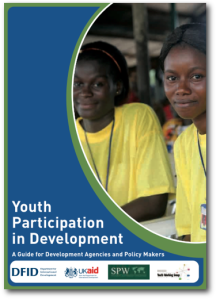I was down in London again on Saturday for the AID Information Challenge – another data-focussed event, but this time looking at International Development Data.
One of the main datasets we had to work with was the DFID Projects Database – a list of all the different development projects the Department for International Development has been funding over recent years, and has funding committed to in the future. Given I’ve recently finished getting the DFID funded ‘Youth Participation in Development‘ guide online, I initially thought I would explore how to link project data to the case studies in that guide. However, I soon found myself joining in with a team of others who were trying to visualise the projects dataset in more general ways.
The result: a faceted browsing mash-up using the fantastic Exhibit framework – turning this into this.
 The faceted browser means that you can select different countries (only by their country code at the moment), years, funding types or funding programmes and explore the different project funding DFID has been giving out to these.
The faceted browser means that you can select different countries (only by their country code at the moment), years, funding types or funding programmes and explore the different project funding DFID has been giving out to these.
Click through to the Map view, and where funding went to a specific country you’ll be able to see a map of where the funds were distributed. (A lot of funding goes to regions or is non-specific geographically – at the moment this just display under the ‘could not be plotted’ above the map).
Even though I didn’t work directly with the Youth Participation in Development Guide, down at the bottom of the list of facets you will find one to help explore youth-related funding: you can pull out all the projects which include ‘Youth’ or ‘Young People’ in their project titles or descriptions.
Thanks to the Publish What You Fund and Open Knowledge Foundation teams for organising the day 🙂
